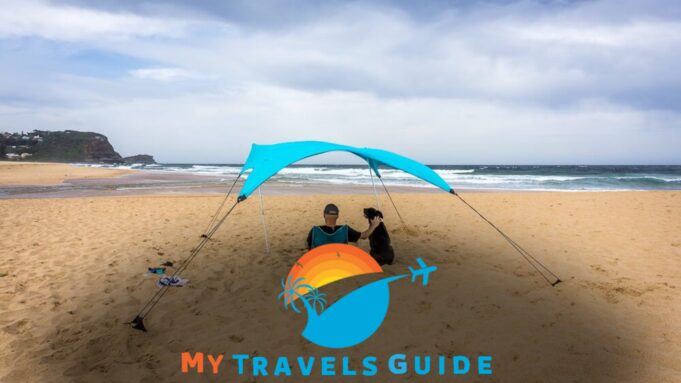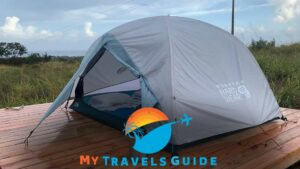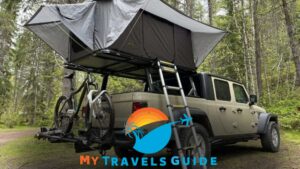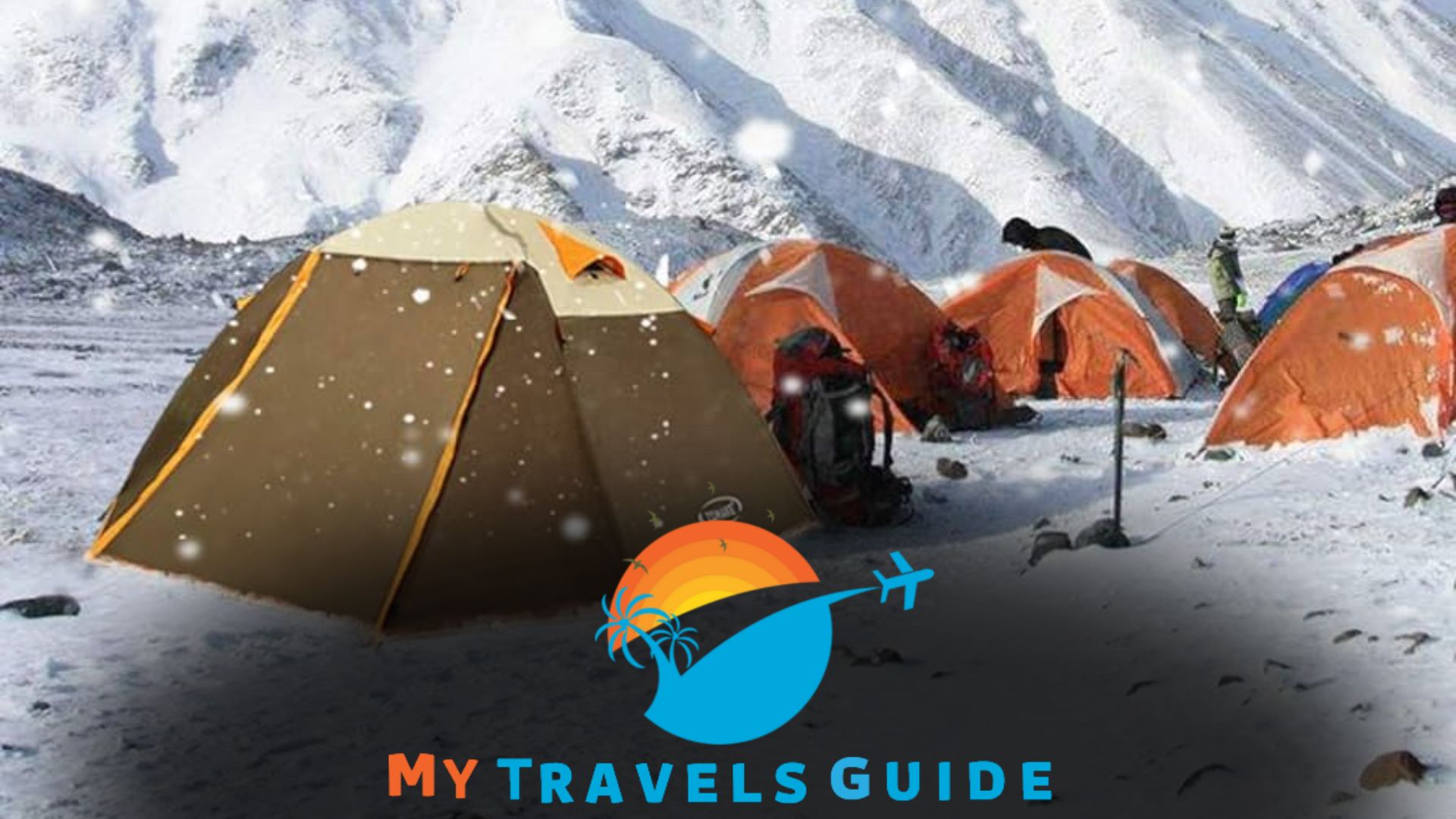In this article:
To set up a Neso tent in the wind, stake down all corners securely and use additional sandbags or weights for extra stability. In windy conditions, it is essential to choose a sheltered location and angle the tent to face away from the wind to minimize resistance and maximize strength.
Understanding the Importance of Wind-Resistant Tent
Understanding the importance of wind-resistant tents is crucial, especially when setting up a Neso tent in windy conditions. Wind can significantly impact tent stability, so choosing a tent specifically designed to withstand strong winds is essential.
Wind-resistant tents offer several advantages, such as enhanced stability, increased durability, and improved safety. They are constructed using sturdy materials and innovative design techniques to ensure that they can withstand even the harshest winds.
These tents often feature reinforced poles, multiple guy lines, and robust anchoring systems.
By investing in a wind-resistant tent, campers can enjoy peace of mind, knowing their shelter will remain sturdy and secure even in challenging weather conditions.
So, whether planning a camping trip or a beach outing, opting for a wind-resistant tent is a wise decision. When setting up your pop-up tent, it’s essential to know how to attach a banner to a pop-up tent, adding a personalized touch to your outdoor space
Choosing the Right Location

When setting up a Neso Tent in windy conditions, it is crucial to choose the correct location. Start by evaluating wind patterns, identifying sheltered areas, and avoiding exposed locations.
Carefully analyze the direction and intensity of the wind to determine the most suitable spot.
Look for areas protected by natural barriers, such as trees or cliffs. These can provide additional protection against strong gusts. Avoid setting up in open spaces or near tall structures that can create wind tunnels.
Additionally, consider the terrain, as uneven ground might affect the tent’s stability.
By carefully selecting the location, you can ensure a more enjoyable and secure camping experience.
Preparing for Setup
Preparing to set up a Neso tent in windy conditions requires several essential steps. First, assess the current wind speed and overall weather conditions.
This will help you determine if it is safe to proceed with setup. Next, gather all the necessary equipment, including the tent, stakes, and guy lines.
These items are essential for a secure installation. Before beginning, carefully check all tent components and accessories to ensure they are in good working condition.
This includes inspecting the poles, fabric, and any additional attachments. These precautions will help you have a successful setup even in challenging wind conditions.
Anchoring the Tent
Setting up a Neso tent in windy conditions requires proper anchoring techniques. Anchoring the tent involves securing it with stakes to prevent it from being blown away.
You can also use sandbags or rocks as additional anchors to provide extra stability.
Placing these weighty objects around the tent ensures that it stays in place even in gusty winds. Another way to increase stability is by utilizing guy lines.
These lines can be tied to the tent and anchored to nearby sturdy objects such as trees or rocks.
The tension helps keep the tent steady, even in strong winds. These methods allow you to have a secure and stable Neso tent setup, even in challenging wind conditions.
For a comfortable camping experience, explore ways such as using fans or air conditioning units – check out our guide on how to cool a tent with electricity for practical tips.
Proper Tent Orientation
Proper tent orientation is crucial when setting up a Neso Tent in windy conditions. The first step is to determine the ideal direction in relation to the wind. Align the tent’s doors and windows accordingly to optimize wind flow.
By doing so, you can create windbreakers utilizing existing natural features, such as trees or rocks.
These windbreakers will help protect the tent from strong gusts of wind. Additionally, ensure to secure the tent properly using stakes and guy lines to prevent it from being blown away.
These measures will ensure a stable and comfortable camping experience, even in windy weather.
So, the next time you set up your Neso Tent, consider these tips for a successful camping trip.
Tightening and Adjusting Tent Components

Setting up a Neso tent in windy conditions requires proper stake placement and tensioning for a secure structure. To tighten and adjust the tent components, start by ensuring the ropes and guy lines are taut.
This will provide stability and prevent the tent from flapping in the wind.
Adjusting the poles and tent structure is equally important to maintain stability. Ensure the poles are securely inserted into the designated grommets or attachment points.
Apply tension evenly to all sides of the tent to prevent it from collapsing or shifting.
Following these steps, you can effectively set up a Neso tent in windy conditions and enjoy a comfortable and safe outdoor experience.
Additional Tips For Windy Conditions
When setting up a Neso tent in windy conditions, there are additional tips to consider. To reduce wind resistance and lower the profile of the tent, try utilizing the rainfly and additional tarps. This will provide extra protection and stability.
It’s also essential to check and reinforce the tent seams and zippers. This ensures they are secure and less likely to be affected by strong wind gusts.
By following these tips, you can have a successful Neso tent setup even in challenging windy conditions.
Safety Precautions and Considerations
When setting up a Neso tent in windy conditions, it is crucial to prioritize safety precautions and considerations. One important aspect is monitoring weather forecasts to identify potential changes.
Enforcing tent safety rules, such as properly securing the tent with stakes and guy lines, is essential.
Additionally, seeking shelter in extreme wind conditions can help prevent any accidents or damage to the tent. By carefully following these steps, you can ensure a safe and enjoyable camping experience with your Neso tent, even in challenging wind conditions.
Remember to prioritize safety at all times and be prepared for any unexpected weather changes. Long-term camping demands a reliable shelter, and we’ve compiled a list of the best tents for a long-term camping adventure, ensuring durability and comfort throughout your extended stay.
Conclusion
Setting up a Neso Tent in windy conditions can be challenging, but with the right knowledge and preparation, it is achievable.
By following the step-by-step instructions outlined in this blog post, you can ensure the stability and safety of your Neso Tent even in strong winds.
Start by choosing a suitable location and properly anchoring the tent’s corners using sandbags or stakes. Remember to tighten the lines and secure the anchor points for maximum support.
Using guy lines and windproof accessories can also significantly enhance the tent’s wind resistance.
Taking these precautions will protect your tent from potential damage and ensure a pleasant and enjoyable outdoor experience.
So, don’t let the wind deter you the next time you plan a beach or outdoor adventure. With the knowledge and tips provided here, you can confidently set up your Neso Tent and enjoy the great outdoors regardless of the wind conditions.









